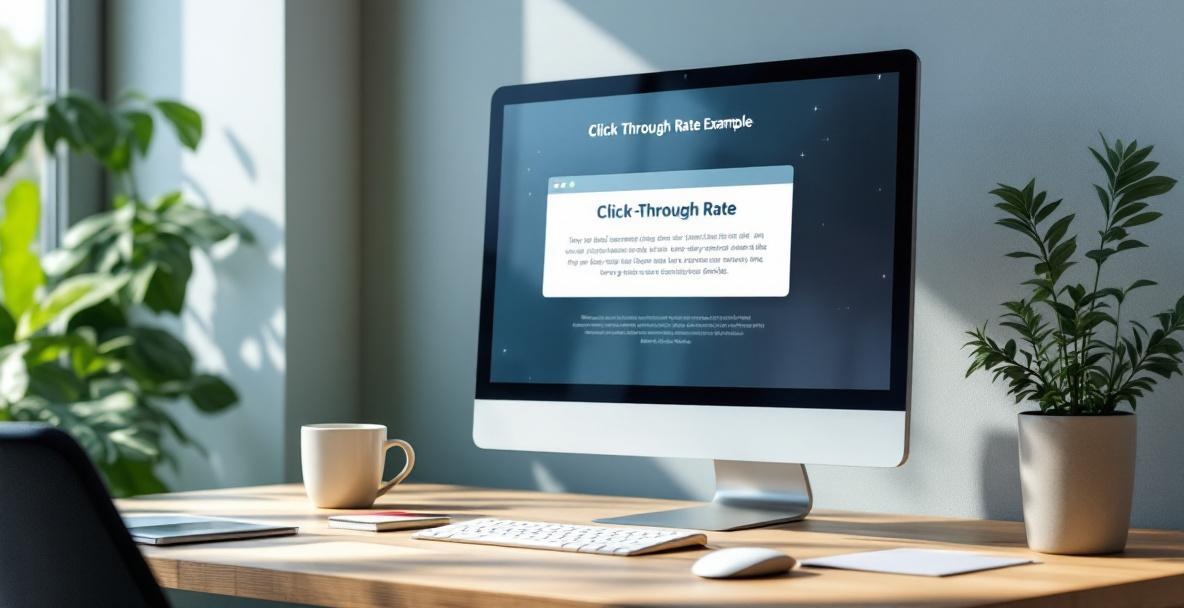Clicks matter. Even the smallest jump in your click-through rates can boost traffic, drive more sales, and build your bottom line. Every extra click gives you a real shot at more business. At SeoFlow, we know that a tiny improvement in CTR can spark a big change in visitors, leads, and revenue over time.
Why Every Click Counts

Your click-through rate tells you the percentage of people who choose your link after they see it in search results, ads, or other online spots. This simple number reveals whether your message truly hits home. When visitors click your link, search engines take note because it shows that your content meets their needs.
A higher CTR means more people visit your site, which opens up more chances for sales and sign-ups. At SeoFlow, we have seen that pages with strong CTRs bring in extra leads compared to those that perform at an average level. This steady rise gives you an edge over competitors who have not yet tuned their CTR.
And think about the user experience. When someone finds what they need quickly, it builds trust in your brand. This win-win cycle means that good click rates help boost your search ranking, which in turn leads to even more clicks and steady growth.
How Your CTR Tells a Bigger Story
Remember that your click rate is part of a larger picture. It shows how attractive your search listing is compared to other results. People scan search results fast and decide in seconds. That brief moment is your chance to show clear value and encourage a click.
Better CTRs do more than just raise your numbers. Our team at SeoFlow has found that improved click rates come with longer visits, more pages checked out, and higher conversion rates. When your content meets a visitor's expectations, they stick around longer and engage more. It all adds up to better overall performance in your online efforts.
Search engines keep track of these clicks too. Although Google never shares full details, our observations point out that a steady rise in CTR often comes before a jump in rankings. In short, more clicks lead to even more exposure and further chances to succeed online.
Writing Headlines That Really Grab You

Your headline is the opening pitch that can make or break your chance to get noticed. It might be the only shot you have to hook someone in the search results. Today, when voice search and mobile devices rule, a sharp headline is more important than ever. Research shows that titles of 50-60 characters tend to work best because they offer enough detail without getting cut off.
Being specific can make a big difference. A bland title like "Guide to SEO" rarely catches anyone's eye. Instead, try a headline with numbers or specific benefits. For example, a title such as "7 SEO Techniques That Grew Our Traffic by 213% in Just 30 Days" beats a simple generic one any day. Specific details spark both curiosity and trust.
Always match your headline to what people really want. Look at the top-ranking results for your keywords and see if visitors are after facts, guidance, or deals. Your headline should instantly promise that your content delivers exactly what they need, so there is no hesitation when they see it.
Words That Make Your Headline Stand Out
Some words hit straight to the heart. Our tests at SeoFlow have shown that adding a few well-chosen phrases can really boost your CTR. For instance, words like "exclusive deal" or "members-only offer" make readers feel they are getting something rare. Phrases like "last chance" or "only a few left" create urgency that pushes people to act quickly.
Words that promise value also work well. Terms such as "guaranteed results" or "essential insights" tell your audience that your content is worth their time. Mixing in hints of discovery with phrases like "hidden secrets" or "surprising tactics" can stir up curiosity and invite a click.
The trick is to use these words honestly. Adding fancy terms without real backup only leaves readers disappointed. Choose phrases that truly match your content, like calling your approach "surprisingly effective strategies" when you really deliver unexpected insights.
Tapping Into Feelings That Drive Clicks
People are moved by their feelings, even when clicking on search results. A great headline knows how to stir emotions. For example, a question like "Are These Hidden Website Issues Costing You Sales?" plays on worry, while a title like "How We Doubled Organic Traffic in 90 Days" appeals to the desire for success. Mixing these emotional touches gives your headline a strong pull.
Match the tone of your headline with your brand and your audience's expectations. For professional subjects, ideas like "trusted expertise" or "secure strategies" work well, while lifestyle topics can shine with a bit of excitement or inspiration. Knowing what resonates with your readers helps make your headlines even more effective.
It is wise to balance honest facts with emotion. Overhyped headlines can snag a click at first but often lead to disappointment later. A headline that promises truth and draws on real feelings gives you the best chance to keep your visitors engaged.
Crafting Meta Descriptions That Work Wonders

Meta descriptions act like a mini-ad for your page. They may not boost your rank on their own, but they play a huge part in getting clicks. Keep your meta description between 140 and 160 characters so your message stays clear and complete. Use that space to highlight key benefits that matter to your visitors.
A great meta description builds on your headline rather than repeating it word-for-word. While the headline grabs attention, the meta description adds extra details that explain why your page is worthwhile. Together, they form a compelling story that makes someone eager to visit.
Adding a personal touch can make a big difference. Using words like "you" and "your" helps create a feeling of a one-on-one conversation. When you address real problems or needs, your message feels tailor-made for each reader.
Showing the Real Benefits
A strong meta description tells readers exactly what they will gain by clicking. Rather than just listing features, focus on the results they can see. For example, instead of saying "Our guide covers keyword research techniques", say "Discover how to find low-competition keywords that can triple your organic traffic in this comprehensive guide". Clear promises like these draw people in.
Being specific adds real weight to your message. Vague promises such as "Learn how to improve your website" rarely grab attention. However, spelling out details like "Learn the exact 5-step process that helped our clients hit first-page rankings for 87% of their target keywords" shows clear value and sets the right expectations. This kind of detail pulls in readers who are looking for solid information.
Understanding your audience is key. When you know what matters to them, you can craft meta descriptions that speak directly to their needs. This focused style communicates clear benefits and usually outperforms one-size-fits-all messages.
Wrap It Up With a Clear Call to Action
A clear call to action in your meta description can really boost your click rate. Simple phrases like "Discover how", "Learn more", or "Find out why" tell readers what to do next. This gentle nudge helps move someone from just looking to actually clicking.
Placing your call to action near the end works best. This way, you can set up the value first and then invite the reader to act. When you follow this natural flow, your message becomes more persuasive and tends to win more clicks.
Different types of pages benefit from different CTAs. If your content is informative, a nudge like "Learn how" fits well. For commercial offers, a note such as "Save time with our tips" works best. And when it's time to buy, a short, urgent message like "Shop now" can prompt immediate action.
Real-World Testing and What the Numbers Say

Testing different versions of your headlines and descriptions is the way to see what really works. The best marketers use real data to compare results rather than guess. By setting up simple A/B tests, you can learn which variations win. Even smaller teams can get actionable insights from these tests.
Keep your tests focused by changing only one element at a time. If you tweak too many things at once, you won’t know what made the difference. Comparing just two versions of a headline or meta description builds a clear picture of what your audience prefers. This steady, focused method leads to targeted improvements.
Modern tools let you dive into your data by device type, location, and more. Often you will find that one style works better for certain groups. This kind of detailed tracking means you can adjust your message for everyone in your audience.
Planning Tests That Matter
Start with a clear idea of what you want to test. Instead of trying random changes, think about what might really boost your click rate. For example, you might suspect that adding specific numbers to your headline makes it feel more solid. That belief is the starting point for meaningful testing.
Make sure to run your tests long enough to collect solid data. You need enough impressions on each version to avoid random ups and downs. For most sites, this means testing for at least 2 to 4 weeks, unless you have very heavy traffic. Rushing your tests can lead to mistaken assumptions that cost you later.
Remember, don’t just test headlines and meta descriptions. Look at other elements like rich snippets, schema markup, and featured snippets too. Testing a wider range of factors can bring significant gains in your online performance.
Making Sense of the Results
When you review your test results, dig deeper than just higher click numbers. Check to see if the extra clicks translate into more sales, sign-ups, or longer visits. The goal is to attract not just more visitors, but the right kind of visitors. Smart analysis means connecting every click with real business growth.
It helps to break down your results by device, audience, or even search intent. For example, you might see that one headline works really well on mobile but not on desktop. These patterns give you a granular view that guides your next steps.
Also, keep an eye on your data over time. Watching trends over days, weeks, and months shows you whether your improvements are steady or just a quick spike. When your changes lead to lasting growth, you know you’ve hit on a winning formula.
Wrapping It Up
To improve your click-through rates, you need to combine great headlines, smart meta descriptions, and consistent testing. Each element plays a part in helping you beat the competition and draw the right crowd. Continuous improvement is the key since your methods should adapt as user behavior and search trends evolve.
What to Do Next
Your work doesn’t stop here. Once your basics are in place, try more advanced steps like personalizing your listings, using structured data to grab extra attention, and optimizing for featured snippets. Every new tactic builds on the strong foundation you already have. Keep experimenting to stay just ahead of the game.
Make CTR improvement a team effort. When everyone understands how important great search listings are, it becomes a core part of your daily work. This ongoing approach leads to better results than one-off projects because it becomes part of your everyday strategy. Teamwork on CTR makes a lasting difference.
Finally, remember that your CTR is just one part of the bigger picture. It supports your overall business goals, whether you are focused on customer journeys or boosting conversions. Seeing the whole strategy means every extra click moves you toward real growth.
Ready to transform your click-through rates and drive substantial organic traffic growth? SeoFlow offers AI-powered tools specifically designed to optimize your content for maximum visibility and engagement. Our platform analyzes your current performance, identifies high-impact optimization opportunities, and helps you implement changes that drive measurable results. Take the next step in your CTR journey today.




